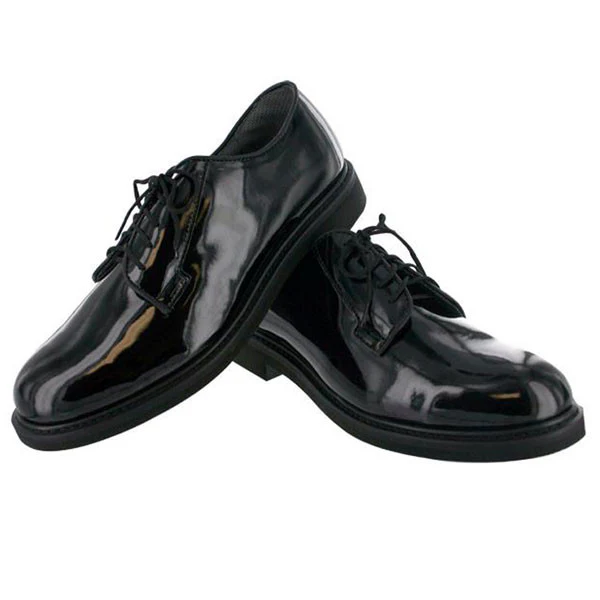Russian Leather Shoes Through the Ages: A History of Craftsmanship and Industry
In the course of excavations at Nerevskij End, remnants of the workshops of shoemakers and beamhouses were found. The site also contained leather shoes dating back to the 11th-16th century.
The process of preparing leather for shoemaking began with a soak. The hide was then cleared of any flesh that was left and subcutaneous tissue using iron adszes.
Russian tradition of shoemaking
Shoemakers started using various kinds of baste as early as the 12th century. The bark of trees was removed (birch, oak, linden, or elm) and combined with the bast; it was then stored for some time. The bark was cut into strips and was used to weave the lapti. The strips could be weaved in the diagonal or straight patterns and shoes could be decorated using embroidering or stamping.
Lapti were the main footwear for the average person. They were distinguished by their simplicity and comfort and the possibility of being made quickly and with a minimal cost. They were used until the beginning of the Civil War in Russia. After that, leather shoes were mass produced to replace them.
In the 16th-17th centuries there was a different kind of foot-wear that was popular with ordinary people -the porshni that were essentially low-heeled Mulgati shoes. The remains of this kind of shoes have been found in the urban excavation layers but they are not discovered in the earth. These shoes were also woven from ox rawhide, but they had a felt upper with a leather bottom.
The leather shoe industry in Russia
In the 11th and 10th century, Novgorod’s tanning houses produced rawhide. syromiatnaia, syromjatnaja], that was not tanned, it was it was kneaded, then soaked in fat. Leatherworkers used it to make belts, tackles and a basic style of footwear called “bog shoes”. porshni]. Judging by the symmetrical examples of these shoes found in the excavations (for the left and right foot) The shoemakers cut the materials on a specific last.
The earliest bogs were decorated with designs printed on the sides which resembled the design of a pouch. kosheliok, koshelek). It was a typical method of decorating leather. The designs were later stitched with silk or wool thread.
Novgorod is where the oldest leather shoes that have been preserved in Russia have been found. They were different from one another: some were slender and affixed to the ankle; others were fitted with a collar around the ankles, similar to boots. Many pair of these shoes were owned by aristocrats and boysars which were depicted on sculptures.
Lapti was a very well-loved kind of shoe among the Russian peasantry in medieval times. Old, worn-out lapti would be hung on fences or inside houses to repel evil spirits that an unknown guest might bring. Older lapti was also utilized to move the domovoi, or house spirit, from one residence to another in the course of a move.

Development of Russian leather footwear
Archaeological evidence suggests that shoemakers created shoes for the largest segment of Novgorod citizens, ranging from artisans to peasants. The shoemakers also made shoes for princes of wealth and boyars depicted on monuments to art. From the 11th to the 12th century, the skill of shoemakers significantly improved. Early shoes were distinguished by smaller designs and embroidery. These were later replaced by more complex compositions.
In the 13th century, soft shoes appeared (Rus. porshni]. In Vjatichi burial grounds, remains of shoes with soles that were flat have been discovered. The upper, sole bootleg and heel quarter of these shoes are constructed of a more flexible and elastic leather that is more flexible than the sole. A liner [podnariad, also known as podnarjad] was stitched between the two upper halves.
A distinctive feature of the shoes was the heavy Russian leather (lapti). The leather was made of animal hides, tanned with barks of birch, oak, linden and other trees. The leather was renowned for its longevity with a distinct scent and unique hatched texture.
The 17th and 16th centuries saw the introduction of new types of footwear in Europe. The 19th century saw these boots grew to be basic winter footwear for Russian peasants. They remain worn with traditional Russian clothes and represent Russian culture. They are made from high quality natural leather and have an asymmetrical last that is matched to the position of the foot and allows room for the toes.
Russian shoe brands
The production of leather shoes in Russia is more than 10 percent of the footwear industry. It is among the major industries that is continuously growing due to the increasing demand for top-quality leather shoes. To meet this increasing demand, several companies in the shoe industry have emerged in Russia. Vakhrushi-Litobuv, and Technoavia are two of the companies based in Yoshkar-Ola.
Vakhrushi-Litobuv specialises in the manufacture of leather safety shoes and is the most prominent provider of these kinds of products in the Russian market. It sells its products to Mosvodokanal>the Management Company LLC and North-West>(formerly known as PJSC as well as Bashkiravtodor>>> JSC. It also offers a range of casual leather shoes.
Technoavia has been in business since 1992. The plant located in Yoshkar-Ola includes four injection molding machines Desma that allow it to make footwear using soles made of PU/PU as well as PU/TPU. Technoavia is the only producer of leather safety boots that are insulated in the world.
The company is the first to use “Russian leather” which is crafted from hides of Southern German cattle and is coated with wax and oil. The leather is a rich deep color, ranging from sienna to deep claret. It also has a distinct sweet smell. Leather is extremely sturdy and stain-resistant.